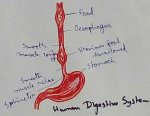Plants living in Water
We will discuss about the plants living in water. Plants growing in water are called aquatic plants. There are three types of aquatic plants.
They are:
(i) Floating plants,
(ii) Fixed plants,
(iii)
Under water plants.
(i) Floating plants: There are some plants which float on water. Some plants like duckweed, green-alge, wolfia, water-hyacinth and pistia are some of the floating plants that float freely on top of the water. They are called floating plants. They have spongy bodies. Like a sponge there are lots of empty spaces throughout their body and are filled with air. This makes the plants light enough to float.
(ii) Fixed plants: Some plants like water-lily and lotus have roots that fix the plants in the mud at the bottom of the pond. They are known as fixed aquatic plants. Roots of such plants are fixed in the soil at the bottom of a pond. They have plate-like leaves that float over the surface of water. The stomata in the leaves are on the upper side. The stems are hollow and very light. This helps the leaves to float. The stems are very flexible. They bend with the flow of water so they do not get damaged by strong current.
(iii) Underwater plants: Some plants like pondweed, tape-grass, hydrilla, etc. are some common plants which live and grow under water completely. They are called underwater or submerged plants. Their roots fix them in the muddy soil. These plants have narrow, thin leaves without pores. These plants move along with the current. Such plants have very delicate shoots. They breathe through their body surface. The stems are flexible and have air spaces. We can grow such plants in aquarium.
From Plants living in Water to HOME PAGE
Recent Articles
-
Eleventh Grade | Eleventh Grade Science | Eleventh Grade Math
Jun 27, 25 12:26 AM
Eleventh grade biology has been designed in accordance with the recommended topics. We will cover all the topics in biology very exciting and interesting way. -
Explain Digestion of Food | Salivary Glands | Oesophagus | Stomach
Jun 27, 25 12:20 AM
Before the digestion is start by the different enzymes secreted from the different digestive glands food must be turned and chut or mixed with saliva inside the mouth. -
Explain Human Digestive System | Mouth | Tongue | Pharynx | Teeth
Jun 21, 25 01:15 PM
Digestive system is a system of alimentary canal and digestive glands. Alimentary canal- alimentary canal is a tube of variable diameter having muscular wall and glandular epithelial tissues which sta… -
Vernalisation in Plants | Definition | Mechanism | Devernalization |
Jun 18, 25 01:34 PM
Definition of vernalisation- The change of flowering habit due to the low temperature treatment is known as vernalisation. This is a physiological process which was denoted by Clipart in 1857 invite b… -
The Food We Eat | Food we Get from Plants and Animals | Carbohydrates
Jun 15, 25 03:20 PM
What are the food that we should eat? Find out the names of ten food items in the word maze. Write the names in the correct column of the table given below. Food we get from plants Food we get from an…




New! Comments
Have your say about what you just read! Leave me a comment in the box below.